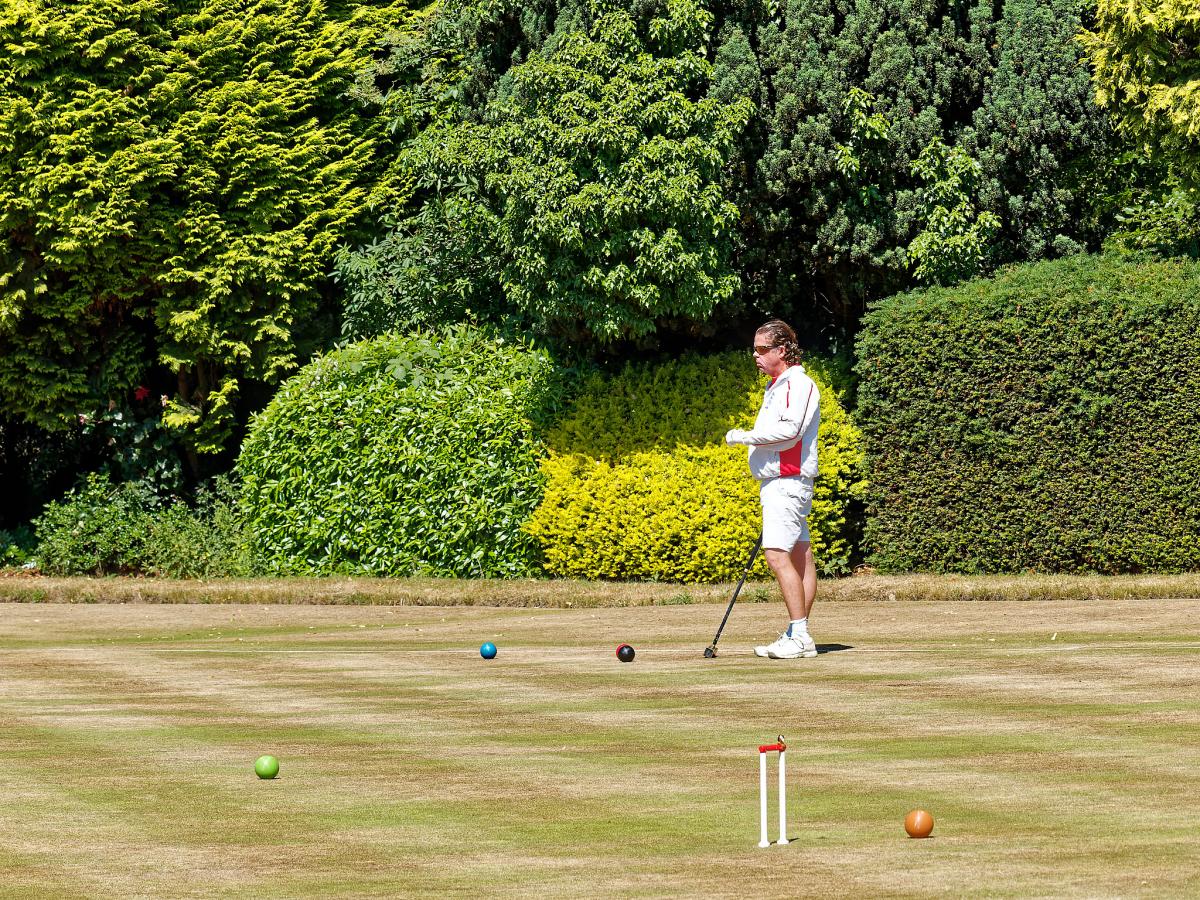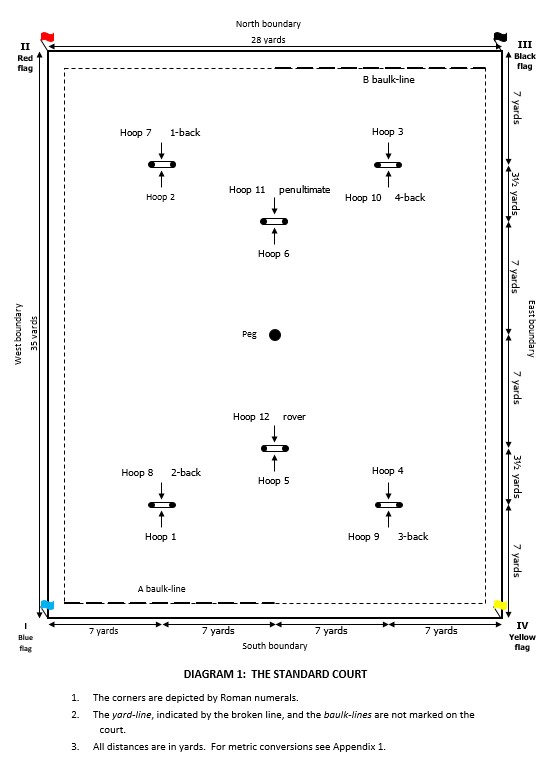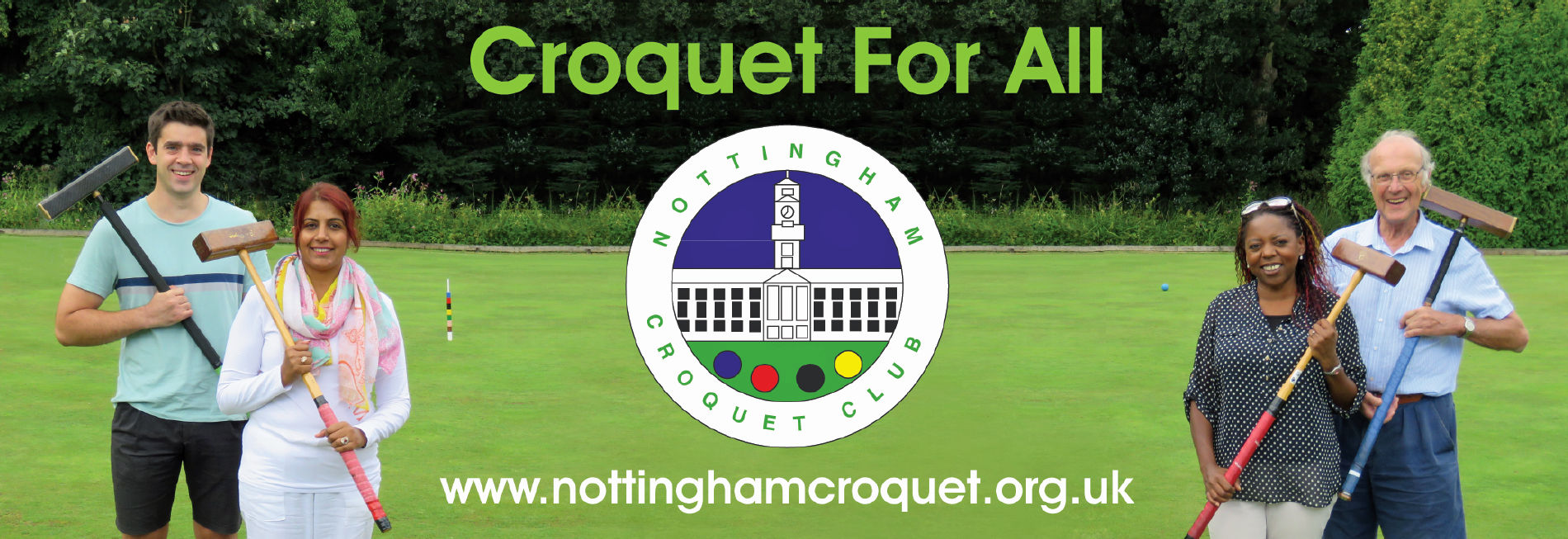 Croquet isn’t just one game but a family of games played with mallets, balls and hoops. The two main codes played in tournaments internationally are Association Croquet (AC) and Golf Croquet (GC). AC has been played at Nottingham for the whole of our club’s history, and is a game of skill, tactics and strategy with a pattern of break play similar to snooker. GC is a more recent introduction, a more interactive and quicker game which is easy to learn, and has a greater emphasis on pure skill. We encourage newcomers to croquet to get to grips with both games, and Short Croquet (SC) which is a quicker and easier variation of AC, and perhaps also to enjoy some fun croquet games such as Pirates.
Croquet isn’t just one game but a family of games played with mallets, balls and hoops. The two main codes played in tournaments internationally are Association Croquet (AC) and Golf Croquet (GC). AC has been played at Nottingham for the whole of our club’s history, and is a game of skill, tactics and strategy with a pattern of break play similar to snooker. GC is a more recent introduction, a more interactive and quicker game which is easy to learn, and has a greater emphasis on pure skill. We encourage newcomers to croquet to get to grips with both games, and Short Croquet (SC) which is a quicker and easier variation of AC, and perhaps also to enjoy some fun croquet games such as Pirates.
Association Croquet and Golf Croquet have different rules and tactics, but use the same courts and equipment (hoops, balls and mallets) and have the same basic objective of getting a ball to go through hoops in a specific sequence. In both games the Red and Yellow balls play against the Blue and Black, either as doubles, in which each of the four players has one ball, or singles, in which each player has both balls of a side.
Both games have a handicap system which enables meaningful competitive play between players of quite different abilities, and which also adds an extra later of strategy.

Golf Croquet has the simpler rules and is the more interactive game. Each turn consists of a single stroke and the balls are played in strict sequence: Blue, Red, Black, Yellow, then back to Blue again. Each hoop is a contest in its own right: the side whose ball first scores it gets a point and then all balls immediately go on to try and run the next hoop in order (as with matchplay golf, after which the game is named). As soon as one side has got the agreed number of points (normally 7), the game is over.
Association Croquet is more like snooker in structure, in that a turn can consist of more than one successful stroke, in which several hoops can be run. At the start of a turn, you choose which of your two balls to play with for the whole of that turn. You are allowed just one stroke initially but can earn extra strokes either by running your next hoop (for one extra stroke), or hitting your ball onto another (“making a roquet”) earning two extra strokes. For the first of your two extra strokes you pick up your own ball, place it touching the one it hit (wherever it stopped), and hit your own ball in any direction, potentially getting both balls into more favourable positions. The second extra stroke is normal, and can be used to hit another ball or to run a hoop to keep the break going. A good player can make many strokes and score many hoops in one turn. The winner is the first side to get both its balls round the course of hoops and hit the peg in the centre of the lawn.
(Court diagram, left, © Croquet England)

